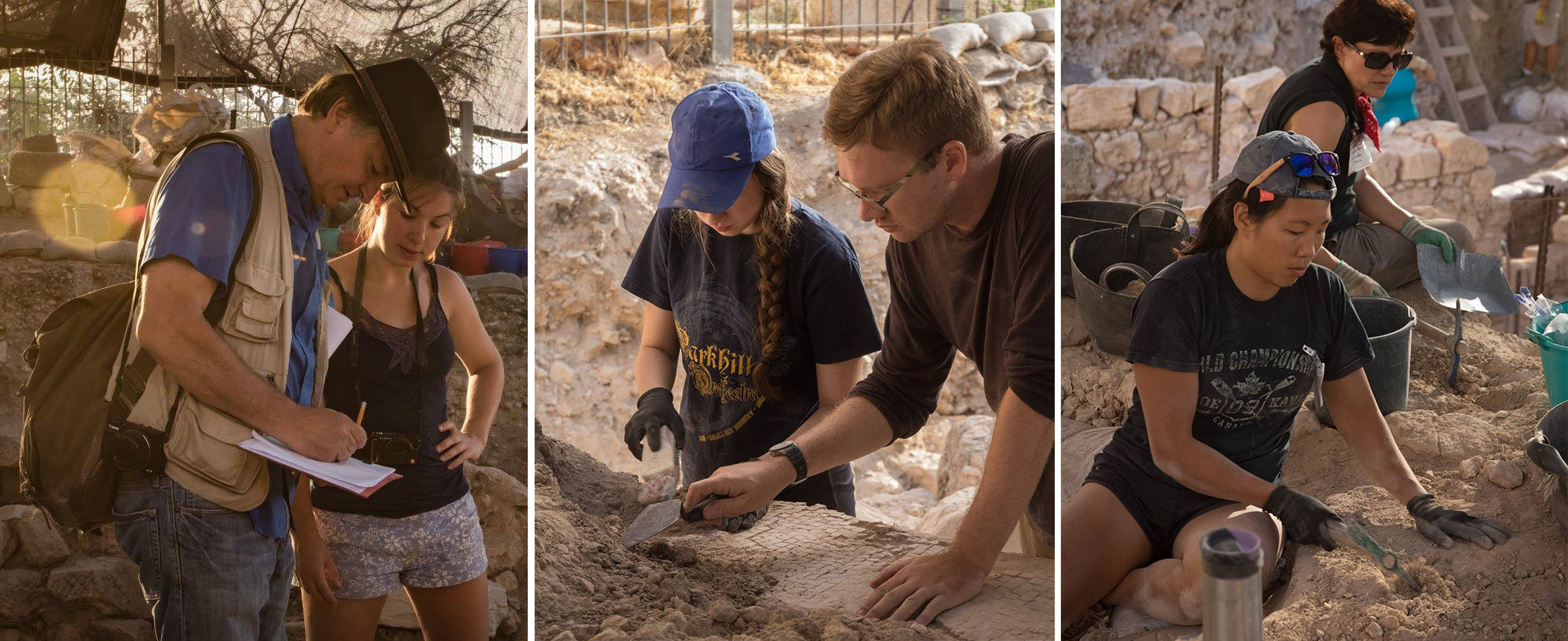Being Indiana Jones (for Three Weeks a Year)

When I was eight, I defected from a high-stakes game of summer camp capture-the-flag to hunt for fossils in a nearby creekbed. Twenty years later, I still obsess about all things ancient—the first civilizations, the evolution of religious thought, and the latest dinosaur find. If this is a phase, I never grew out of it. In fact, I’ve become something of an amateur archaeologist, with surprising benefits for my work life.
In 2016, with only a college internship in archaeology under my belt, I stumbled on a social media post calling for volunteers to dig in Jerusalem. Before I knew it, I was winging my way to Israel with knee pads, sweat bands, and plenty of SPF 50. I spent two to three weeks of each of the following summers in Jerusalem with Dig Mount Zion, helping excavate priestly homes from the time of Jesus, Roman mosaics and frescos, and hints of bloody Crusader battles.
I returned from my latest session in a dusty Jerusalem pit in July to start my new gig as an editor at IDEO. Believe it or not, being a part-time Dirt Hound has really helped my work. How?

1. Archaeology sparks curiosity
I knew nothing about design when I started at IDEO. Likewise, before college I knew zilch about archaeology beyond what I’d seen on TV. The aggressive learning curve kicked me out of my comfort zone and forced me to ask questions of everyone, all the time. What’s a sherd, or for that matter a fill, a balk, or a locus? How did people live in the time of King David or King Herod, and how do we know?
Constantly asking questions can make you feel a bit naive, but I’ve found this sort of curiosity is a great way to learn fast, shake up stagnant systems, and radically expand my view of what’s possible.
Designers know this well. They start with questions: How might we incorporate VR into online experiences? Why are schools bound by four walls? Could play help prisoners? This inquisitive, unbiased approach is what allows them to identify fundamental needs and find creative solutions.
In the same way, I try to broach new concepts I come across, such as designing for social change, with no preconceived ideas, and keep poking and prodding until I unearth the story.

2. Hard labor can be good for you
In pop culture, archaeologists find perfectly preserved, fully excavated structures (I’m looking at you, Indy). But in reality, someone has to remove tons of dirt and rock; sweep the area with a metal detector; sketch and photograph the features of the site; wash, sort, and catalogue finds—and then begin again the next day, on the next layer of earth. Slowly, a complete picture is revealed. It’s meticulous, backbreaking work.
At the Jerusalem dig site, the physical challenges and my lack of formal training helped me understand my limits and accept guidance from the seasoned archaeologists in charge. At the same time, the digs showed me that I’m capable of withstanding heat, stress, language barriers, and lots of pickaxing. These experiences have given me confidence that I can master a new language—design—and tackle stories about IDEO’s most complex, cross-cultural projects.

3. Digs build trust & teamwork
In a given year, Dig Mount Zion includes about 15 staff, 20 students, and 60 wide-eyed volunteers. Participants range from 18 to 86 and hail from Germany, Russia, the Philippines, Canada, New Zealand, and beyond. Being tossed into a pit in 95-degree heat and told to move a mountain of dirt has bonded complete strangers into fast friends.
Working in a place so steeped in history, alongside people from all walks of life—from an Ohio school bus driver to a Messianic Jewish missionary to a particle physicist—helped me build trust and tolerance and let me glean wisdom from people with radically different points of view.
Likewise, diversity of experience and perspective on a single project is IDEO's secret sauce. Our designers have created everything from apps to amps to appliances and I'm charged with capturing those inventions in a way that's easy to understand. Archaeology has prepared me well to incorporate new modes of thinking and work with colleagues from Silicon Valley to Shanghai.
Hopefully, they won’t mind all the dirt under my fingernails.

Photos courtesy of Rachel Ward. For more, please contact rwardphotoclt@gmail.com.
Words and art

Subscribe

.svg)







